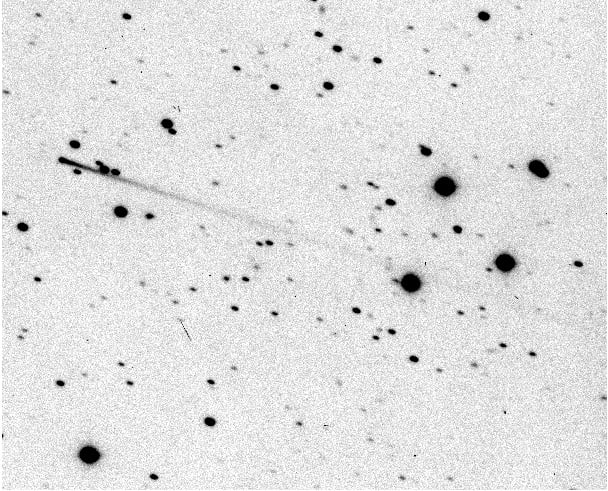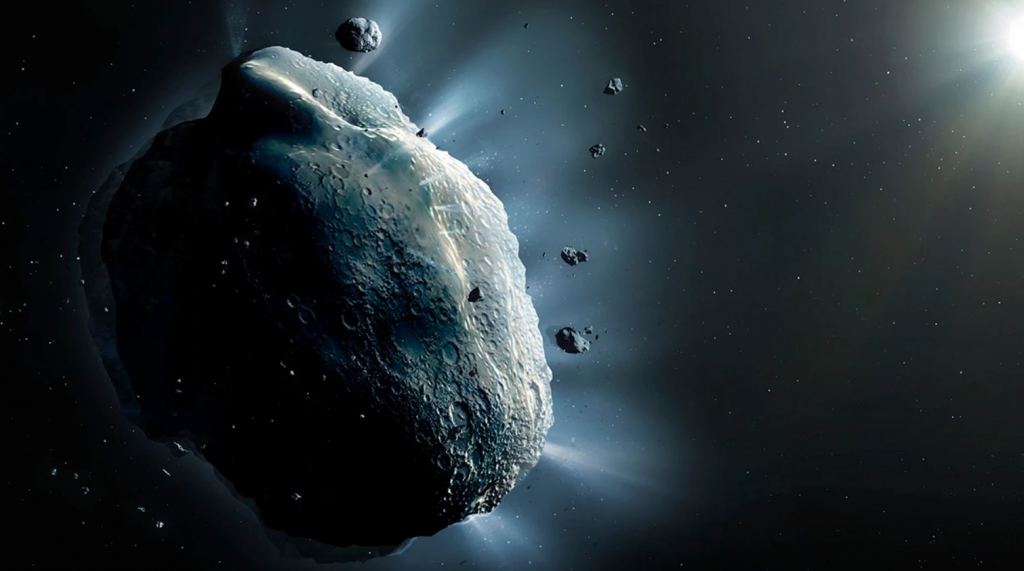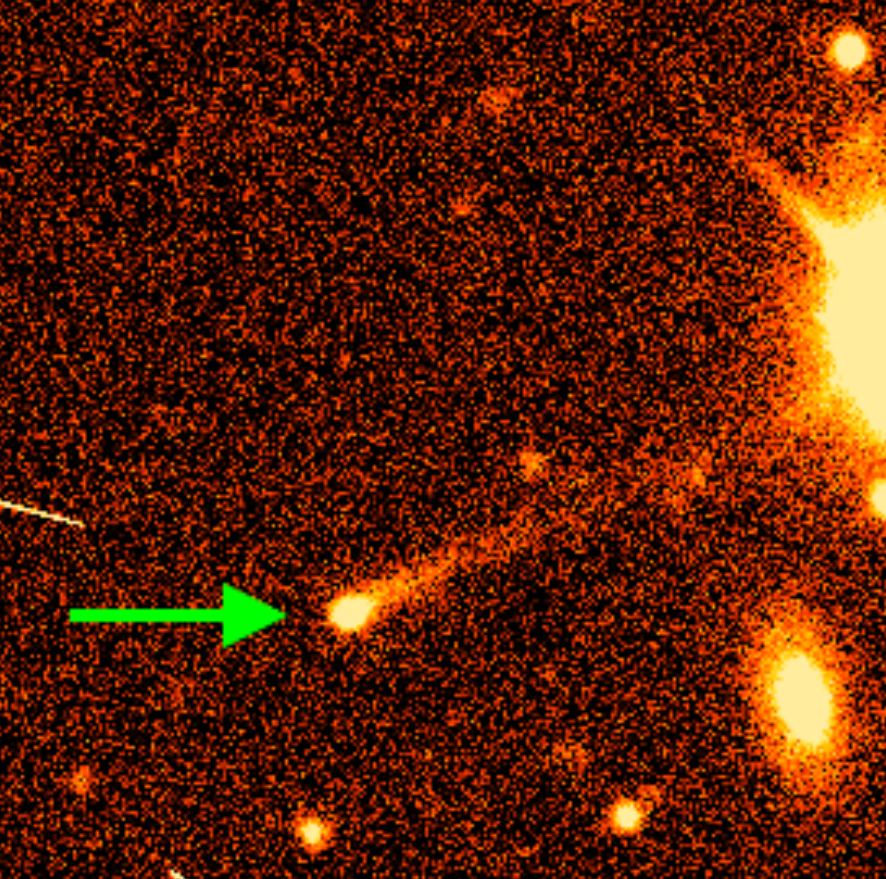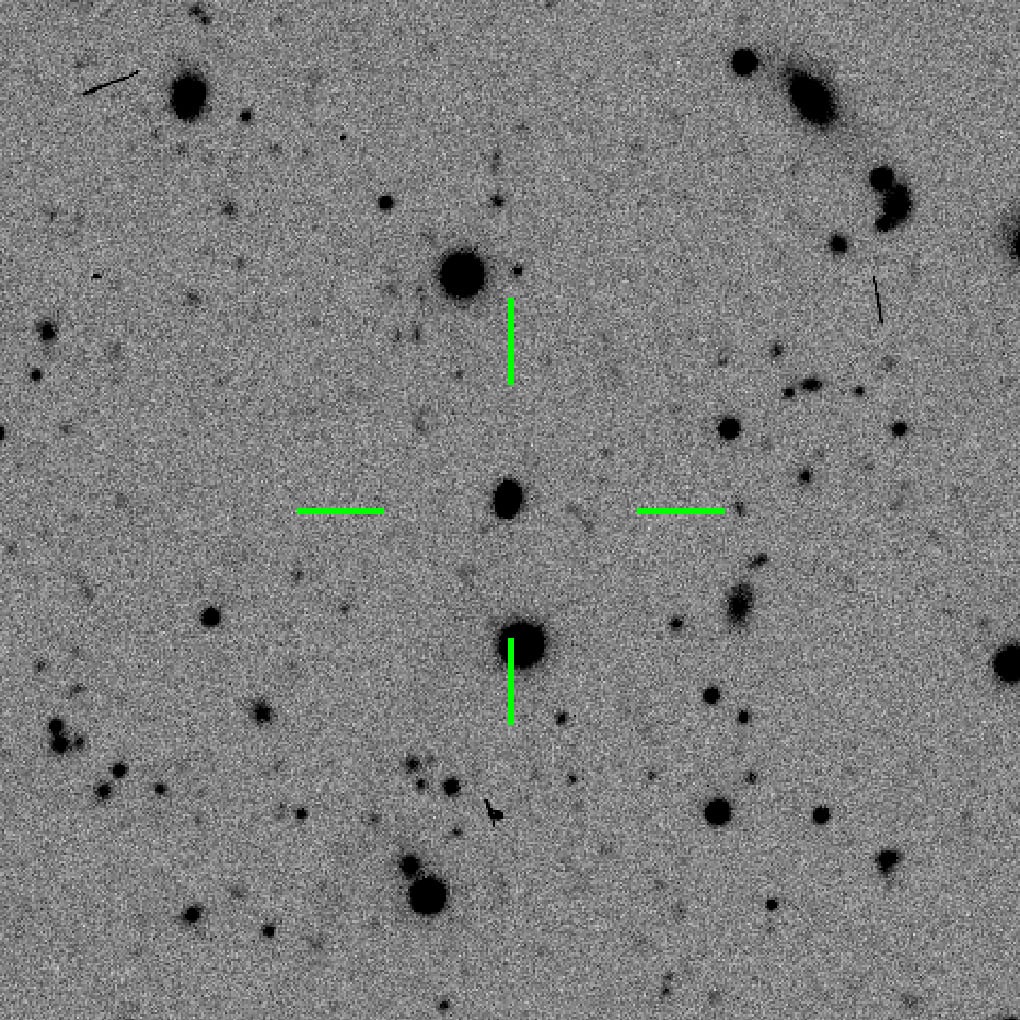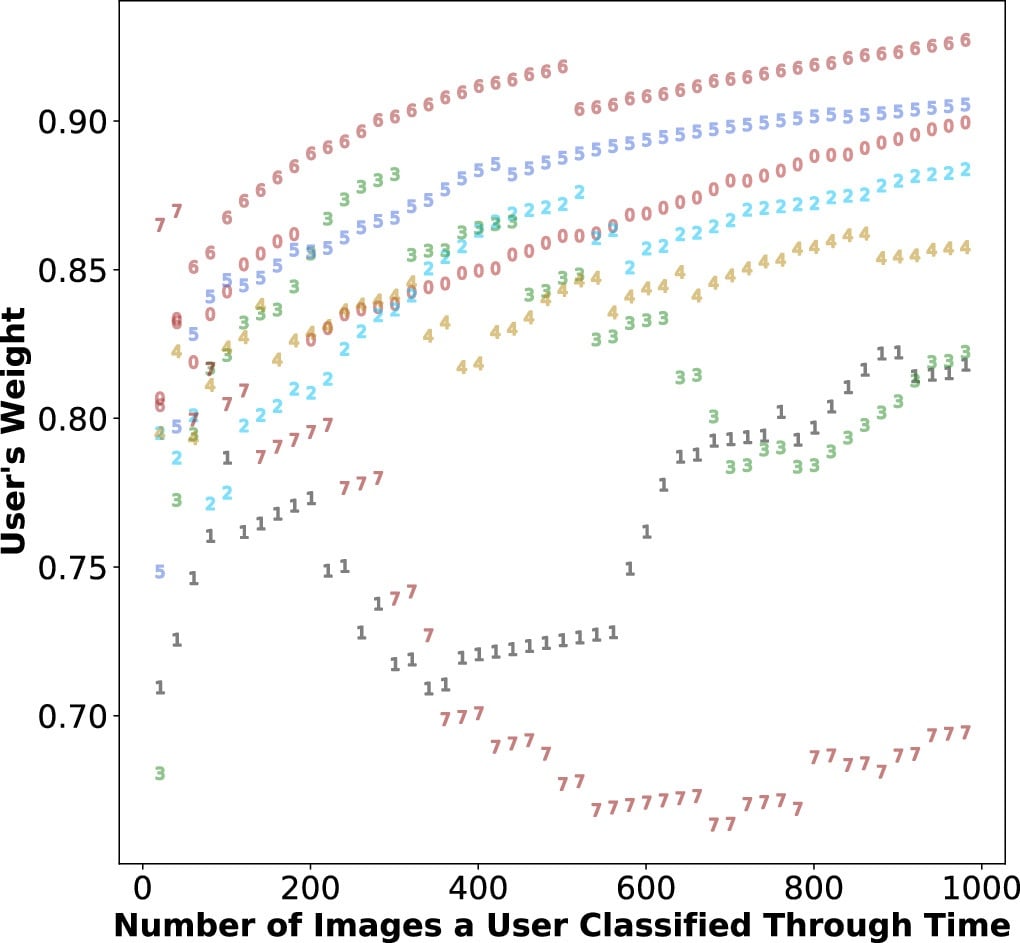Nature often defies our simple explanations. Take comets and asteroids, for example. Comets are icy and have tails; asteroids are rocky and don't have tails. But it might not be quite so simple, according to new research.
That nice, clean definition took a hit in 1996 when a pair of astronomers discovered that what was thought to be a main-belt comet was actually an asteroid. The object is named 7968 Elst–Pizarro after the two scientists. It displayed a comet-like dust tail at perihelion.
7968 Elst-Pizarro was classified as a main-belt comet (MBC) because it orbits within the main asteroid belt between Mars and Jupiter. It's still called an MBC sometimes. However, its icy component that sublimates into a vapour trail likely comes from a small surface crater with volatiles in it rather than from a homogenous ice component. That's why it's called an active asteroid.
Active asteroids are unusual and rare objects. To understand them and their place in the Solar System's history, scientists want to find more of them. That led to the creation of NASA's Active Asteroids Project.
Now, the Active Asteroids Project has announced the discovery of 15 new active asteroids. These findings are in a new paper published in The Astronomical Journal. It's titled " The Active Asteroids Citizen Science Program: Overview and First Results, " and the lead author is Colin Chandler from the Dept. of Astronomy & the DiRAC Institute at the University of Washington in Seattle. Among the co-authors are nine volunteer citizen scientists.
"For an amateur astronomer like me, it's a dream come true," said volunteer Virgilio Gonano from Udine, Italy. "Congratulations to all the staff and the friends that also check the images!"
"Active objects are rare in large part because they are difficult to identify, so we ask volunteers to assist us in searching for active bodies in our collection of millions of images of known minor planets," the authors of the paper write. Active asteroids aren't the only objects they're trying to find. There are several other types.
Centaurs are small Solar System bodies that orbit between Neptune and Jupiter. Centaurs have crossed the orbits of one or more giant planets, making their orbits unstable. They have traits in common with both comets and asteroids, and about 30 of them have dust-like comas. These are the active ones.
The Active Asteroid Project is also trying to identify active quasi-Hilda asteroids (QHAs). QHAs are beyond the asteroid belt but within Jupiter's orbit. Astronomers have discovered about 3000 of them, and about 15 of them have tails of gas and dust.
The Project also hopes to identify Jupiter family comets (JFCs.) JFCs are comets with very short orbital periods of less than 20 years. They're contained within Jupiter's orbit but may be captured Kuiper Belt Objects. They likely originated from collisions between objects in the Kuiper Belt and then were captured by Jupiter.
All of these objects have something to tell us about how the Solar System formed. Beyond that, they can help unravel the mystery of Earth's water. There's another, more forward-thinking reason for wanting to find these active objects. Their water can be split into hydrogen for rocket fuel and oxygen for respiration in future missions, though that's so far in the future it's esoteric.
The commitment of the citizens taking part is admirable. Since the effort launched on August 31st, 2021, about 8300 volunteers have taken part. Collectively, they've examined about 430,000 images.
"I have been a member of the Active Asteroids team since its first batch of data," said volunteer Tiffany Shaw-Diaz from Dayton, Ohio. "And to say that this project has become a significant part of my life is an understatement. I look forward to classifying subjects each day, as long as time or health permits, and I am beyond honoured to work with such esteemed scientists on a regular basis."
The images in the project all come from the Dark Energy Camera (DECam.) DECam is a high-performance camera with a wide field of view that's mounted on the Víctor M. Blanco 4-meter Telescope at Cerro Tololo Inter-American Observatory.
The images are filtered by query across multiple databases and image archives before they're placed in front of the eyes of the citizen scientists. This includes the Minor Planet Center (MPC), the JPL Small-Body Database, the Canadian Astronomy Data Centre, and the National Optical and Infrared Laboratory (NOIRLab) AstroArchive. They also consider the observing telescope's field-of-view, the objects' coordinates and semi-major access, and multiple other factors.
The Project then uses scripts to download the desired data from astronomical archives. Then, they generate uniform DECam thumbnail images of each object. This results in millions of images of potential active asteroids or similar objects. There's no possible way there are enough professional astronomers to handle this much work. So, the images are grouped up into "subject sets" and sent to the citizen scientists who put the effort in and make the project feasible.
Before the volunteers work with any real images, they're trained on a set of images of objects that display some activity, like a tail or a coma. Then, the participants give them a score from zero (unidentifiable/missing;) to 9 (definitely active, overwhelming activity indicators.) "All training images in Active Asteroids are derived from those images to which we applied a score of ?5; our minimum threshold, for which we consider the activity to be highly likely," the authors explain.
In each image, a green reticle identifies the object of interest. The citizen scientists are asked a fairly straightforward question: do they see activity (i.e., a tail or coma) coming from the central object?
Over time, most citizen scientists became more productive. But not always.
Each subject set requires a certain amount of preparation by the professional astronomers. That has to be balanced by the work and time it takes a citizen scientist to go through it. After some experimenting, the project settled on sets of about 22,000 images, which took a citizen participant about four to eight weeks to go through.
The project takes place on the Zooniverse platform, home to many other citizen science projects. One of the benefits of that platform is that the citizen participants and the professional astronomers can talk with one another on the "Talk" discussion boards on Zooniverse. "Surprisingly, we have made discoveries that first come to light on the Talk pages, well before the subject set was fully retired," the authors of the paper write.
This is just the first data release from the project. Finding 15 active asteroids and one Centaur is just the beginning. In fact, the project has produced more than 20 discoveries, resulting in multiple publications. And they're not done.
They intend to continue working and improving their methods. The Project is also looking ahead to the Vera Rubin Observatory's Legacy Survey of Space and Time (LSST), which will produce an enormous number of images for evaluation.
If you're interested in participating, visit the project website.
"The Active Asteroids project is ongoing and can be accessed through the project website," the authors write. "Participation is easy and intuitive and can take as little as a few minutes to contribute."
 Universe Today
Universe Today

